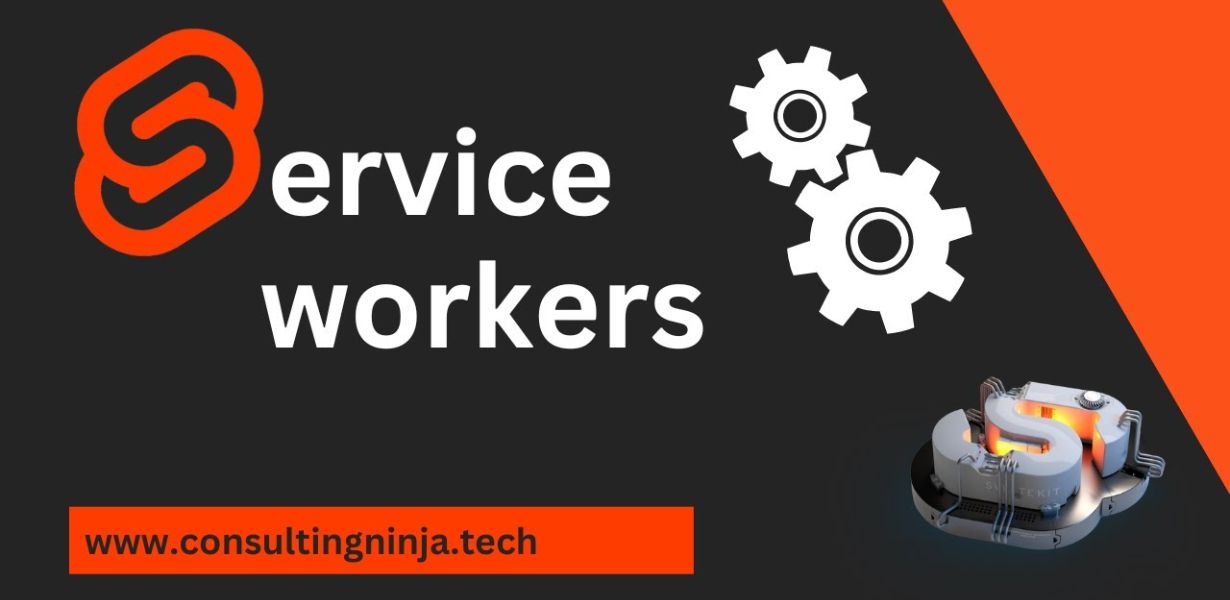
The Rise of Edge Computing: Exploring Service Workers in the Age of Decentralization
- Post
- August 8, 2023
- Progressive Web Apps, Service Workers, Web Technologies
- 0 Comments
Amidst the intricate interplay of technology, the marriage between edge computing and service workers stands as a testament to our evolving digital ecosystem. In this narrative, we delve deep into the intricate mechanics of service workers and their symbiotic relationship with the burgeoning landscape of edge computing.
Defining Service Workers: Unveiling the Power Behind the Scenes
At its core, a service worker is a script that operates in the background, running independently of a web page. This innovative concept empowers developers to control network requests, manage caches, and enhance user experiences. Essentially, service workers act as intermediaries between users and servers, seamlessly enabling offline functionality and accelerating website loading times.
The Service Worker’s Arsenal: Understanding Its Functions
Service workers wield an impressive array of capabilities, each contributing to a more efficient and engaging browsing experience:
Caching Strategies: By storing critical assets like images and stylesheets locally, service workers significantly reduce load times and ensure seamless performance, even in the absence of a stable internet connection.
Push Notifications: With the ability to receive and display push notifications, service workers transform web applications into interactive mediums, fostering real-time engagement.
Background Sync: Service workers facilitate background synchronization, enabling data updates even when the user isn’t actively browsing the website.
Security Enhancement: These scripts play a crucial role in mitigating security risks by enforcing HTTPS connections and safeguarding against potential threats.
Edge Computing Unveiled: The Evolution of Data Processing
Edge computing redefines the way data is processed, shifting the locus of computation closer to the data source. This distributed approach minimizes latency and enhances performance by reducing the distance data needs to travel between the user and the server.
Convergence: How Service Workers and Edge Computing Align
The synergy between service workers and edge computing emerges as a natural evolution. By leveraging the distributed architecture of edge computing, service workers enhance their functionality, enabling faster responses and smoother user experiences.
Impact on User Experience: Navigating the New Digital Realm
The amalgamation of service workers and edge computing has profound implications for user experiences:
Instant Loading: Service workers, combined with edge computing, enable websites to load instantly, transcending the traditional constraints of latency.
Reliable Offline Access: The collaborative prowess of these technologies guarantees seamless interactions even when connectivity wanes, ensuring uninterrupted user access.
Dynamic Content Delivery: With service workers facilitating dynamic content updates, users are treated to real-time information, making interactions more relevant and engaging.
Challenges and Future Prospects: Pioneering a New Era
As with any transformative shift, challenges arise alongside opportunities. Managing service worker updates, maintaining compatibility across diverse browsers, and optimizing caching strategies demand constant attention. Looking ahead, the fusion of service workers and edge computing holds the promise of propelling us into an era of unprecedented digital efficiency.
Final Words
In this journey through the realm of edge computing and service workers, we’ve witnessed the transformational impact of decentralized data processing. As our digital horizons continue to expand, the convergence of these technologies promises to reshape our online experiences, minimizing barriers and maximizing possibilities.
Commonly Asked Questions
Q1: What is the role of service workers in offline browsing?
A1: Service workers enable offline browsing by caching essential assets, allowing users to access previously visited content even without an active internet connection.
Q2: How does edge computing enhance data security?
A2: Edge computing minimizes data transit distance, reducing exposure to potential security breaches during data transmission.
Q3: Can service workers be utilized in mobile applications?
A3: Absolutely. Service workers can be integrated into mobile apps to enhance performance, enable offline access, and deliver push notifications.
Q4: Are there any downsides to using service workers?
A4: While powerful, improper implementation of service workers can lead to increased complexity, potential bugs, and challenges in handling updates.
Q5: What’s the future of edge computing and service workers?
A5: The future holds a deeper integration of these technologies, ushering in an era of hyper-responsive, seamless digital experiences that transcend traditional limitations.




